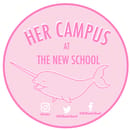I never thought much about my body before I turned twelve. It was a vehicle and a vessel—something that carried my brain from place to place, that sometimes got a bit banged up in the process but that always sprang back quickly enough for me to run to the next place my brain needed to be.
And then I turned twelve—and puberty hit me like a train going at full speed.
The worst part, for me, was my hips. The fact that my breasts grew larger than my liking and flopped over like dead fish—not wonderful, but I could deal with it. But my hips were uncomfortable, and wide, and big—they stuck out, in my twelve-year-old opinion, like a sore thumb, and as a shy introverted kid, there was nothing I would have disliked more.
Even then, however, there was a body positivity movement being generated—something calling women (specifically women) to be proud of their hips and their body and their stature, and to embrace the space they took up. I knew then, I think, that something was wrong—that I didn’t quite fit in with the rest of them—but I loved their self-confidence, and I loved that they weren’t afraid of taking up space. And so, for six years, I tried to love myself.
The seventh year, when I turned 19, was the year I realized that I was trans—a transmasculine guy with a figure that would have been all the rage around the Renaissance period, but a guy nonetheless. The seventh year was the year that all the issues I had with my body, all the sadness and self-loathing, became quite a lot clearer—and quite a lot more complicated.
Even now, seven years past the age of twelve, there is precious little representation of curvy masculine-aligned trans people in either the mainstream media or the body positivity movement—when I was twelve, there was none at all; at least, none that I saw. Curves, it seemed to be posited, were for Real Women. Real women have curves. Real women have large breasts and full hips and look really great in red lipstick and ‘50s-era clothing.
I do look really great in red lipstick. But curves are difficult—because, as it turns out, curves are for everyone who has them. Curves are beautiful, and gorgeous, and non-gender-specific, because not everyone who has curves is a woman. Boys can have curves. Girls can have curves. Nonbinary, genderqueer, and agender people can all have curves, because curves are not exclusive to women.
And curves can still be lovely.
My own difficulty with curves—specifically my hips—I have figured out, is not necessarily the curves themselves, but the way that those around me react to them—by gendering them as female. I am masculine, and my curves are masculine too; my gender defines my body, not the other way around. My curves are lovely the way they are. But they are not the curves of a woman.
October 10th is National Curves Day in the United States, and it should be celebrated by all who have curves and who want to celebrate them—men, women, and nonbinary people alike. Curves can be lovely, and powerful, and wonderful—and they remind us that we deserve to take up the space that we do. We deserve to be seen, and felt, and heard. We deserve to feel validated—and we all deserve to love ourselves, whether or not we are quite happy with the way that we are. We all deserve that much.
[Cover image from Unsplash; all others sourced from Pinterest]



